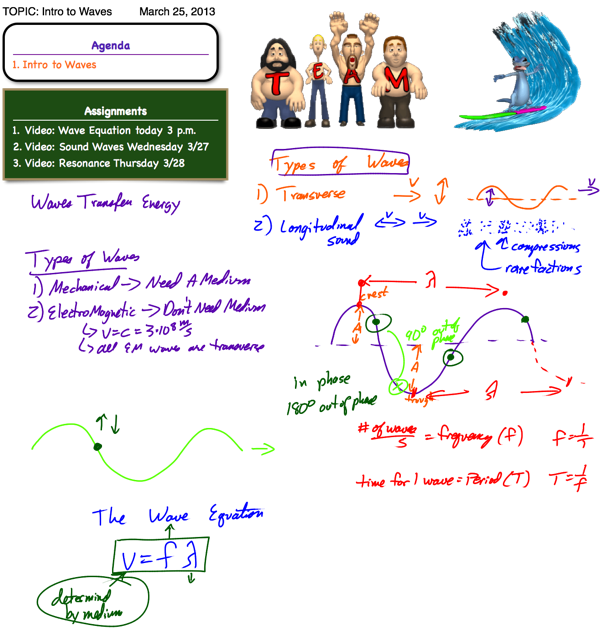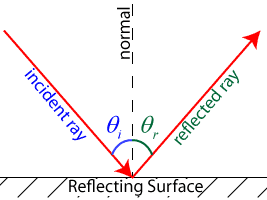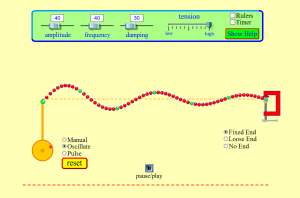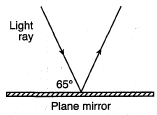
Tag Archives: wave equation
Sound Analysis Lab

Wave Vocab WS Answers
Waves on a String
Wave Basics (continued)
WS: Wave Basics and Reflection
Reflection and Review
When a wave hits a boundary, three different events can occur. The wave may be:
- Reflected – wave bounces off a boundary
- Transmitted – wave is transmitted into the new medium
- Absorbed – energy of the wave is transferred into the boundary medium

The law of reflection states that the angle at which a wave strikes a reflective medium (the angle of incidence, or ![]() ) is equal to the angle at which a wave reflects off the medium (the angle of reflection, or
) is equal to the angle at which a wave reflects off the medium (the angle of reflection, or ![]() ). Put more simply,
). Put more simply, ![]() . In all cases, the angle of incidence and the angle of reflection are measured from a line perpendicular, or normal, to the reflecting surface.
. In all cases, the angle of incidence and the angle of reflection are measured from a line perpendicular, or normal, to the reflecting surface.
Although all waves can exhibit these behaviors, electromagnetic light waves are typically considered for demonstration purposes. When a wave bounces off a reflective surface, the nature of its reflection depends largely on the nature of the surface. Rough surfaces tend to reflect light in a variety of directions in a process known as diffuse reflection. Diffuse reflection is the type of reflection typically observed off of pieces of paper. Smooth surfaces tend to reflect light waves in a more regular fashion, such that the reflected rays maintain parallel reflected rays. This process is known as specular reflection, and is commonly observed in mirrors.
Question: The diagram represents a light ray reflecting from a plane mirror. Find the angle of reflection for the light ray.
Answer: The angle of reflection must be 25°, since the angle of incidence is 25° (note that angles are always measured from the normal!)
Review Problems
Key Points:
The velocity of a wave depends upon its medium.
The frequency of a wave determines its nature and remains constant from medium to medium.















